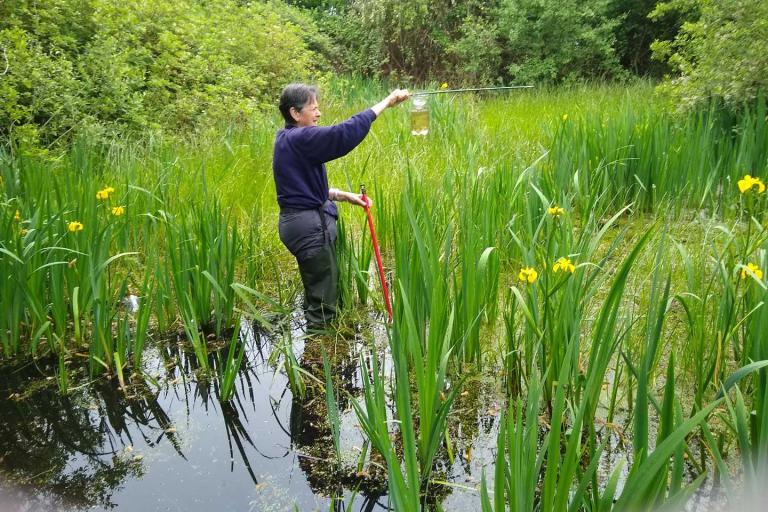Approximately 82% of our species records are from the last 30 years, and 19% were recorded in the last five years.
We check all species records are suitable before adding them to our Recorder 6 database. We follow these steps with all records.
- Storage: We securely store the records.
- Filing: We organise and categorise them.
- Processing: We prepare the data for inclusion.
- Validation: We verify the accuracy and relevance.
- Verification: We confirm the authenticity of each record.
This rigorous process ensures the integrity of our database.
Where records come from
Many of our records come from expert recording groups or professional surveyors. Encouraging recording experts of the future is also essential. We are always interested to obtain new records. Learn how to share your records with us.

Notable and protected species
UK (and sometimes European) legislation protects some wildlife species because of their rarity or historical persecution. These are called protected species. Species with conservation designations, but no legal protection are called notable species.
Visit the Natural England website to learn about protected species and the planning system.
The Joint Nature Conservation Committee (JNCC) is a public body that advises the government on nature conservation. The JNCC has produced a list of UK species and their conservation designations. We use the JNCC list to report species designations (both protected and notable). The JNCC website also provides some historical background to how they created the list and updated it.

Protected and notable species in Berkshire and Oxfordshire
Our entire database includes records of legally protected and notable species:
- 578,064 records in Oxfordshire
- 531,691 records in Berkshire
Oxfordshire's records comprise:
- 221 different protected species
- 1,907 notable species
Berkshire's records comprise:
- 228 protected species
- 1,096 notable species
We only consider species as 'protected' if they are both protected and notable.
In terms of recording activity, there is a significant difference between the two counties. Oxfordshire, the higher number of notable species is due to the county’s inclusion of less popular insect taxa such as bugs, beetles, flies and hymenoptera.
View details of all the protected and notable species recorded in Berkshire and Oxfordshire (xlsx format, 179 KB).
We rely on recorders like you
We are a not-for-profit organisation. We rely on receiving data from every source possible to improve our database of environmental information. Your wildlife records will help protect and enhance our environment by improving our data quality and quantity.